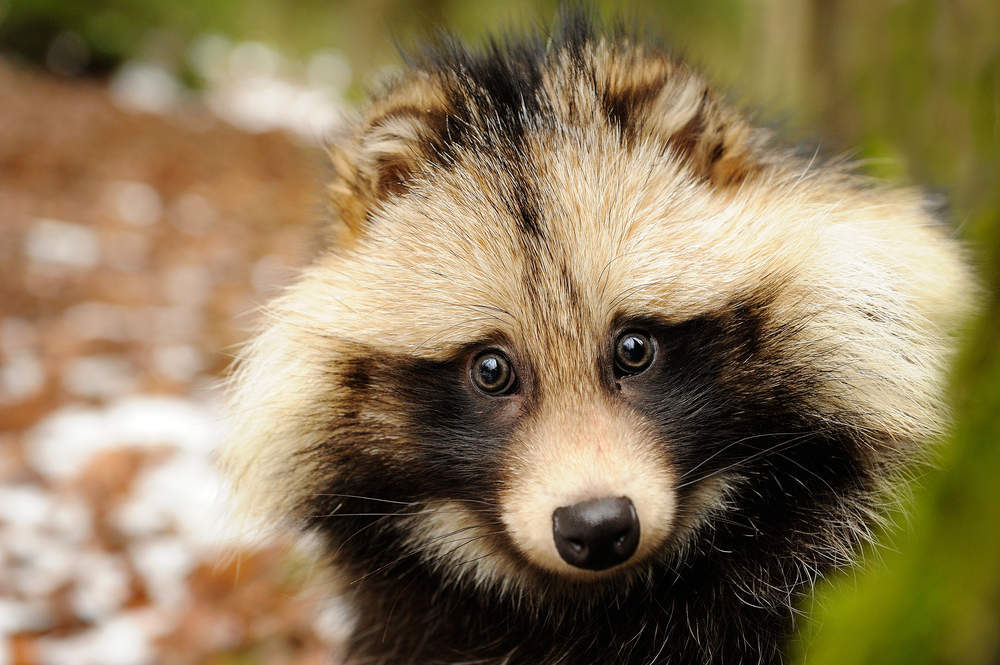
A mission to eradicate a swarm of aliens before they destroy other life-forms might seem like a quest from a video-game, but it’s actually happening for-real in Sweden.
Okay, so these aren’t aliens from another planet but they are dangerous.
The Swedish Association for Hunting and Wildlife Management are hunting raccoon dogs, otherwise known as tanuki.
The cute, cuddly-looking critters are native to Japan, China, and parts of Eastern-Russia. They may look like raccoons but they’re actually one of the earliest canids; related to foxes or wolves.
Why are people hunting raccoon dogs?
While raccoon dogs are not much bigger than badgers, they’re something of an epidemic in Sweden and Finland.
As a result, a task force is eradicating the species.
How well do you really know your competitors?
Access the most comprehensive Company Profiles on the market, powered by GlobalData. Save hours of research. Gain competitive edge.

Thank you!
Your download email will arrive shortly
Not ready to buy yet? Download a free sample
We are confident about the unique quality of our Company Profiles. However, we want you to make the most beneficial decision for your business, so we offer a free sample that you can download by submitting the below form
By GlobalDataThe aliens were originally brought to Europe in the 1940s where they were sold as exotic pets or hunted for fur. Unfortunately, despite being cute and interesting, raccoon dogs make terrible pets.
For a start, tanuki carry a lot of worms. They can carry hookworm, flatworm or fatal fox tapeworm. In addition, they are mostly nocturnal and don’t enjoy being awake in the day.
Another thing that might worry potential owners is that during the winter they hibernate.
All of these issues mean that people often buy the animals then get sick of them. Owners release their former-pets into the wild and that’s where the trouble starts.
Though they present no serious threat to humans, raccoon dogs are voracious eaters.
They also reproduce incredibly quickly so populations can soar rapidly.
Raccoon dogs feed on amphibians and ground-nesting birds. The issue is that in areas where tanuki populations are high, they can cause native species to go extinct.
Thankfully, the eradication process isn’t quite as grisly as it might sound. In Sweden, hunters capture the raccoon dogs, tag them, and sterilize them.
These animals are free to go afterwards. Because they mate for life, sterilising even one partner can be effective at curbing population growth.
It is illegal to keep and sell raccoon dogs as pets in Sweden, Denmark and Norway.
However, in the UK it is still currently legal. The RSPCA advise UK customers to avoid the species. A recent viral video showing one for sale for £60 at Clitheroe market prompted this response:
We understand why people are upset to see this footage, and we are as well. Unfortunately it is currently legal to keep and sell raccoon dogs as pets in England and Wales without a license… Raccoon dogs have recently been listed under Invasive Species Regulations so it should become illegal to sell them in a few years and we would welcome this move. The RSPCA is very concerned about the trend of keeping raccoon dogs as pets as we have in recent years dealt with a number of cases where the animals have either escaped, or been deliberately released to the wild. We urge people to think hard about taking on any exotic pet – they can be much more difficult to look after than people realise. We would not recommend they take on raccoon dogs at all – they are simply not suited to a domestic environment.
Other invasive alien species that have got to places where they shouldn’t be
Of course, raccoon dogs aren’t the only animals who’ve ended up in the wrong places.
Here’s a few other infamous examples of invasive species coursing chaos.
As you’ll see, plenty of the most ecologically dangerous species were brought by European settlers on colonial missions.
American mink
As you might expect, this species is originally from North America, but was introduced to Europe by mink farmers for their fur.
Some animals escaped and began to thrive. This is an issue because they compete with local European mink and spread diseases to them. European mink populations are disappearing as a result.
Grey squirrel
Probably the UK’s most famous example of an invasive squirrel.
Grey squirrels first arrived in the UK and Europe as pets. Escapees formed a self-sustaining population.
Unfortunate, as grey squirrels are bigger they are easily able to out-compete native red squirrels. They also carry diseases which are deadly to red squirrel populations.
Rose-ringed parakeet
Originally found in Central Africa and India, these parakeets have become a common sight in some of London’s parks.
They have also sprung up in areas of Surrey, Berkshire, Manchester or Liverpool. They’ve also appeared in isolated pockets across Europe. In the UK, urban legend has it that they were released from Pinewood Studios during the filming of The African Queen in 1951.
It’s probably more likely that they escaped after being imported as exotic pets, but the former is a nice idea. Ecologists are concerned they might out-compete local birds for food and nesting spots.
Brown rat
Probably the world’s most famous invasive species.
Rats were carried on ships from Europe around the world. As they carry plenty of diseases, they’re considered a particularly harmful invasive species.
Unfortunately though, they’re so widespread its difficult to do much about them.
Domestic cat
Ship’s cats have come to be the bane of the world. In Australia and New Zealand they’ve been credited with the eradication of numerous mammal and marsupial species. They are seen as an ‘ecological disaster’ in Australasia.
Dromedary camel
Originally found in North Africa and the Middle East, did you know that you can also spot Dromedary Camels in Australia?
They were imported to Australia from British India during the 19th Century for use as transportation but they’ve come to be seen as a serious nuisance. Nowadays Australia is the only country with any population of feral camels.
While their impact hasn’t been as devastating as other invasive species, they do tend to eat a huge amount of vegetation. In addition, their searches for water can cause chaos to Australian aboriginal infrastructure.
Domestic goat
Feral goats have been, once again, brought to various countries from Europe.
They can cause serious environmental degradation as well as out-competing local species for food.
Their impact in the Galapagos Islands was considered so dangerous that the goats were killed by the thousands and totally eradicated from the islands.
Wallaby
The UK, Hawaii, France, and New Zealand all have small breeding populations of wallabies.
Most are the descendants of animals escaped from menageries. They’re not thought to be too threatening at the moment but ecologists will constantly be observing their impact.
Raccoon
Imported to eastern Europe and west Russia as fur, and to Japan thanks to the popularity of an American children’s show, raccoons have sprung up around the world outside of their native North America.
Mostly considered a pest and a nuisance, they do also carry disease and parasites.
Earthworm
A worm might be the most common sight in the world in British gardens, but they’re a complete alien in North America.
Nile crocodile
Alligators might be common in Florida, but there’s also a small population of Nile crocodiles.
No one is exactly sure where they came from or even how many there are. It seems to be a small population though, since the animals caught so far all have a similar DNA trace.
That DNA trace doesn’t match any escapees from local zoos or safari parks though so it’s a confusing situation.
Hippopotamus
This last one is the best. Famed drug lord Pablo Escobar kept 4 hippopotamuses as part of his menagerie at his mansion in Colombia.
The mansion held a complete zoo, a gokarting course, a private bullring, and many other unique features.
The hippos were too dangerous and difficult to move so they were left on the empty estate.
As of early 2014, there were about 40 hippos living on the Colombian estate. Unfortunately, as they carry diseases which can kill livestock, and pollute the water they defecate in, they’re a huge nuisance.







